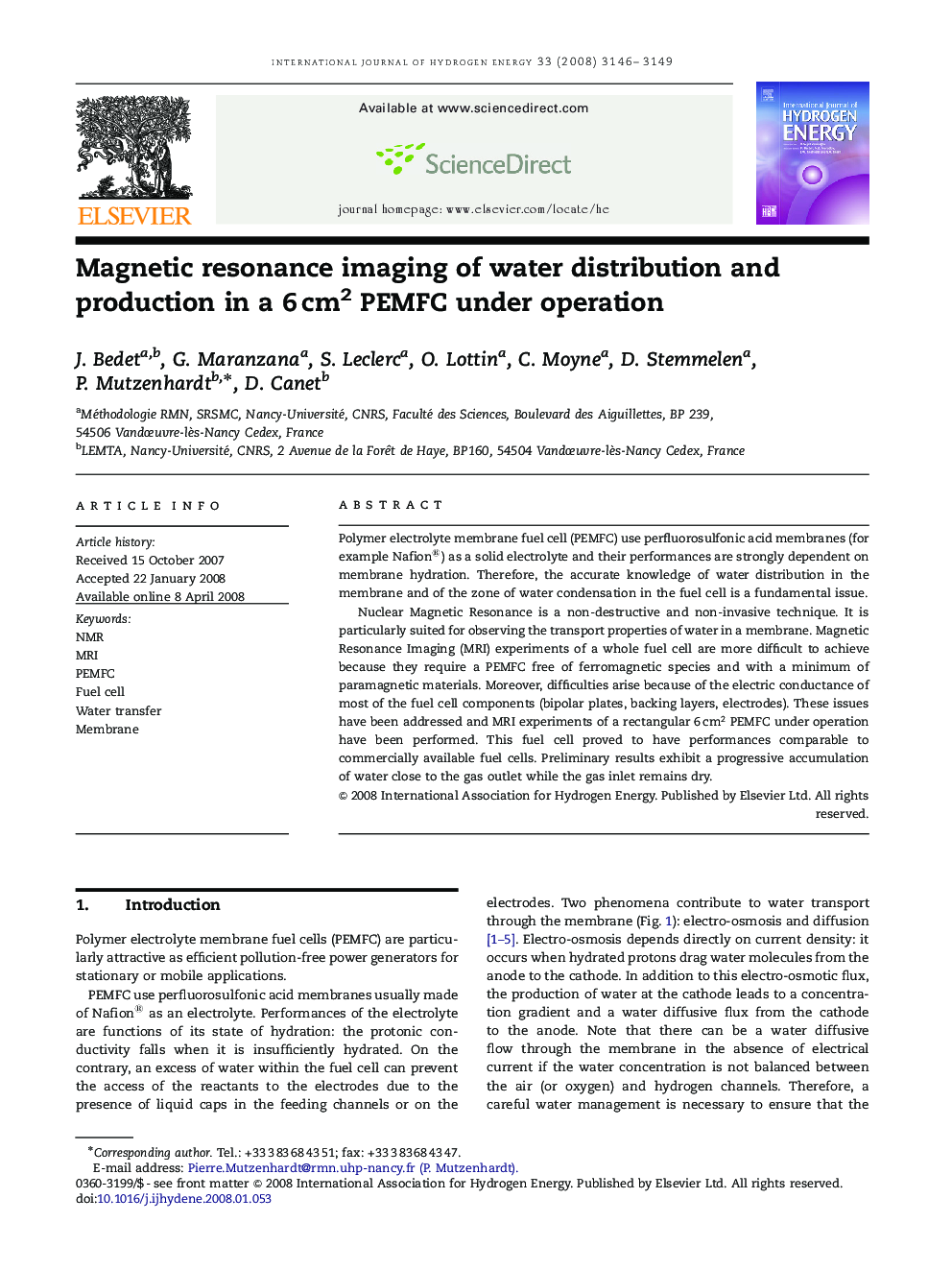| Article ID | Journal | Published Year | Pages | File Type |
|---|---|---|---|---|
| 1279619 | International Journal of Hydrogen Energy | 2008 | 4 Pages |
Polymer electrolyte membrane fuel cell (PEMFC) use perfluorosulfonic acid membranes (for example Nafion®Nafion®) as a solid electrolyte and their performances are strongly dependent on membrane hydration. Therefore, the accurate knowledge of water distribution in the membrane and of the zone of water condensation in the fuel cell is a fundamental issue.Nuclear Magnetic Resonance is a non-destructive and non-invasive technique. It is particularly suited for observing the transport properties of water in a membrane. Magnetic Resonance Imaging (MRI) experiments of a whole fuel cell are more difficult to achieve because they require a PEMFC free of ferromagnetic species and with a minimum of paramagnetic materials. Moreover, difficulties arise because of the electric conductance of most of the fuel cell components (bipolar plates, backing layers, electrodes). These issues have been addressed and MRI experiments of a rectangular 6cm2 PEMFC under operation have been performed. This fuel cell proved to have performances comparable to commercially available fuel cells. Preliminary results exhibit a progressive accumulation of water close to the gas outlet while the gas inlet remains dry.
